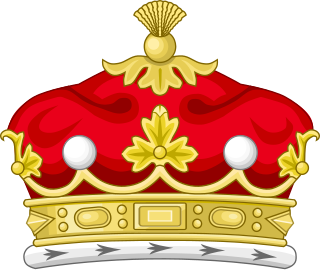
Marquess of Normanby is a title that has been created twice, once in the Peerage of England and once in the Peerage of the United Kingdom. The first creation came in 1694 in the Peerage of England in favour of John Sheffield, 3rd Earl of Mulgrave. He was a notable Tory politician of the late Stuart period, who served under Queen Anne as Lord Privy Seal and Lord President of the Council. In 1703 this first Marquess of Normanby was further honoured when he was made Duke of Buckingham and Normanby. These titles became extinct on the death of the 2nd Duke in 1735.

Duke of Atholl, named after Atholl in Scotland, is a title in the Peerage of Scotland held by the head of Clan Murray. It was created by Queen Anne in 1703 for John Murray, 2nd Marquess of Atholl, with a special remainder to the heir male of his father, the 1st Marquess.
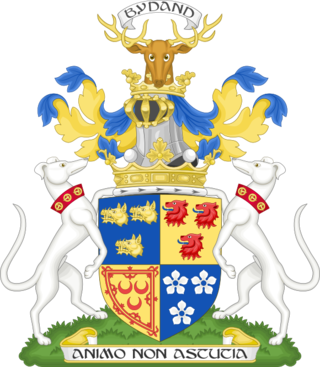
Marquess of Huntly is a title in the Peerage of Scotland that was created on 17 April 1599 for George Gordon, 6th Earl of Huntly. It is the oldest existing marquessate in Scotland, and the second-oldest in the British Isles; only the English marquessate of Winchester is older. The Marquess holds the following subsidiary titles: Lord Gordon of Strathaven and Glenlivet and Earl of Aboyne, and Baron Meldrum, of Morven in the County of Aberdeen.

Marquess Townshend is a title in the Peerage of Great Britain held by the Townshend family of Raynham Hall in Norfolk. The title was created in 1787 for George Townshend, 4th Viscount Townshend.
Earl Fortescue is a title in the Peerage of Great Britain that was created in 1789 for Hugh Fortescue, 3rd Baron Fortescue (1753–1841), a member of parliament for Beaumaris and Lord-Lieutenant of Devon.
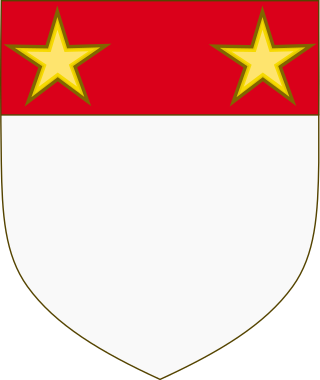
Baron St John of Bletso, in the County of Bedford, is a title in the Peerage of England. It was created in 1582 for Oliver St John.
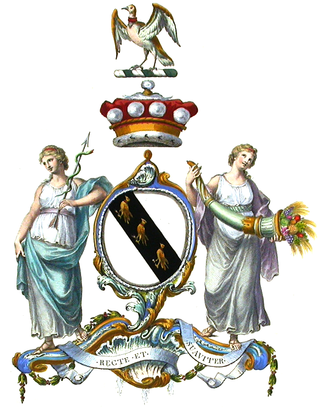
Viscount Scarsdale, of Scarsdale in Derbyshire, is a title in the Peerage of the United Kingdom. It was created in 1911 for the prominent Conservative politician and former Viceroy of India George Curzon, 1st Baron Curzon of Kedleston, who was created Earl Curzon of Kedleston at the same time and was later made Marquess Curzon of Kedleston.

Baron Newborough is a title that has been created twice in the Peerage of Ireland; both titles are extant. The first creation came in 1716 in favour of George Cholmondeley, later 2nd Earl of Cholmondeley. See Marquess of Cholmondeley for further history of this creation.

Baron Delamere, of Vale Royal in the County Palatine of Chester, is a title in the Peerage of the United Kingdom. It was created on 17 July 1821 for Thomas Cholmondeley, a former Member of Parliament for Cheshire. This Vale Royal branch of the Cholmondeley family descends from Thomas Cholmondeley, younger brother of Robert Cholmondeley, 1st Earl of Leinster, and Hugh Cholmondeley (1591–1665), ancestor of the Marquesses of Cholmondeley. The first Baron was succeeded by his son. Before acceding to the title in 1855, the second Baron represented Denbighshire and Montgomery in the House of Commons as a Tory.

David George Philip Cholmondeley, 7th Marquess of Cholmondeley,, styled Viscount Malpas from birth until 1968, and subsequently Earl of Rocksavage until 1990, is a British peer and filmmaker who acted as Lord Great Chamberlain of the United Kingdom from 1990 to 2022.

George James Cholmondeley, 1st Marquess of Cholmondeley,, styled Viscount Malpas between 1764 and 1770 and known as The Earl of Cholmondeley between 1770 and 1815, was a British peer and politician.
William George Cavendish, 2nd Baron Chesham was a British Liberal politician.
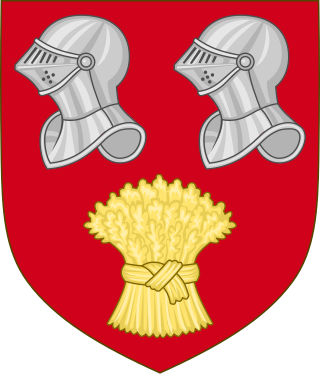
Earl of Leinster was a title in the Peerage of Ireland. It was created on 3 March 1646 for Robert Cholmondeley. He had already been created a baronet, of Cholmondeley in the County of Chester, in the Baronetage of England on 29 June 1611, and Viscount Cholmondeley in the Peerage of Ireland on 2 July 1628. He was created Baron Cholmondeley in the Peerage of England on 1 September 1648. Lord Leinster died childless in 1659 and the titles became extinct. However, the viscountcy of Cholmondeley was revived two years later in favour of his nephew Robert Cholmondeley, who is the ancestor of the Marquesses of Cholmondeley. Also, the Earl's other brother Thomas Cholmondeley was the ancestor of the Barons Delamere.
The Egerton, laterGrey Egerton, later stillEgerton baronetcy, of Egerton and Oulton in the county of Chester, is a title in the Baronetage of England held by the senior patrilineal branch of the Egerton family.

George Horatio Cholmondeley, 2nd Marquess of Cholmondeley, PC, styled Viscount Malpas until 1815 and Earl of Rocksavage between 1815 and 1827, was a British peer and Lord Great Chamberlain of England between 1830 and 1838. Before being called to the House of Lords, he was a Tory Member of Parliament from 1817 through 1821.

William Henry Hugh Cholmondeley, 3rd Marquess of Cholmondeley, styled Lord Henry Cholmondeley from 1815 until 1870, was a British peer and Conservative Member of Parliament.
George Cholmondeley, Viscount Malpas was a British soldier and Member of Parliament.

Hugh Cholmondeley, 1st Earl of Cholmondeley, PC, styled The Honourable from birth until 1681 and then known as Viscount Cholmondeley to 1706, was an English peer and politician.
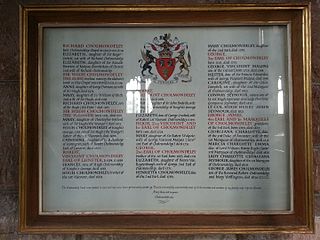
George Cholmondeley, 2nd Earl of Cholmondeley, PC, FRS, styled The Honourable from birth until 1715 and then known as Lord Newborough to 1725, was an English soldier. Cholmondeley was the second son of Robert Cholmondeley, 1st Viscount Cholmondeley, and Elizabeth Cradock. Hugh Cholmondeley, 1st Earl of Cholmondeley, was his elder brother. He was educated at Westminster School and Christ Church, Oxford. Cholmondeley supported the claim of William of Orange and Mary to the English throne and after their accession he was appointed a Groom of the Bedchamber.

George Horatio Charles Cholmondeley, 5th Marquess of Cholmondeley, styled Earl of Rocksavage from birth until 1923, was a British peer. He was the Lord Great Chamberlain of England in 1936 and also between 1952 and 1966.





















